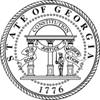
Deal signs 2013 budget
Gov. Nathan Deal today signed into law the 2013 budget, which takes effect upon the start of the fiscal year on July 1.
“Together with the General Assembly, we have enacted a budget that holds the line on spending, while investing in the priorities that will contribute to making Georgia the No. 1 place in the country to do business and create jobs – and continue our high quality of life,” said Deal. “As I do with general bills, I worked with legislators on the front end to make sure we’d have as few line-item vetoes as possible, and we have succeeded in doing that. I think the best way to eliminate wasteful or inefficient spending isn’t with a line-item veto – which is an important tool – but by never allowing such projects into the budget in the first place. I commend the General Assembly on its responsible work, which will preserve our coveted AAA bond rating.”
Attached to this release is the governor’s HB 742 signing statement, a document that outlines legislative language disregards and the two line-item vetoes.
Budget highlights:
• With the deduction of the line-item vetoes, the FY 2013 budget for state funds is $19,341,669,543.
• The FY 2013 budget is $837.9 million, or 4.5 percent, larger than the final FY 2012 budget, though much of that increase reflects costs expanded by population growth.
o FY 2013 remains $1.8 billion, or 8.6 percent, under the original FY 2009 budget of $21.2 billion, which was the state’s highest budget passed to-date.
• When adjusted for inflation, per capita spending in the FY 2013 budget is comparable to FY 1994 spending levels. (FY 2013: $1,971)(FY 1994: $1,954)
• As of the end of December, the size of the state workforce is lower than it has been in more than 14 years. Since the beginning of the economic downturn in FY 2008, the state workforce has been reduced by 12.4 percent as part of overall cost savings measures to balance the budget to reduced revenues.
• The Revenue Shortfall Reserve is now $328.4 million as of the end of the last fiscal year, June 30, 2011. This is a 183 percent increase over its level at the end of FY 2010.
